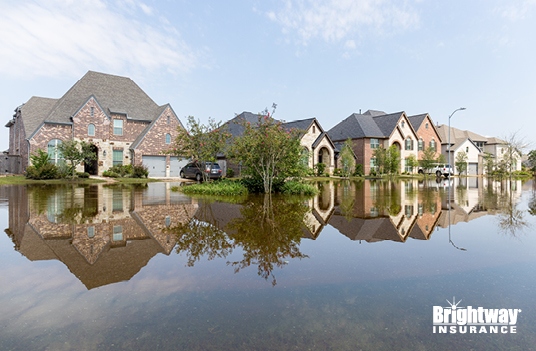- Insurance Tips
Don’t bank on luck; Flood insurance is a good idea even you live outside a high-risk area
Apr 15, 2021

We don’t want to leave protection of our homes and financial futures up to luck. Do you?
When we educate homeowners on the topic, these are the key things we like to point out.
Standard Homeowners policies don’t cover flooding Your Homeowners policy probably covers water damage from household mishaps. Think of things such as a burst pipe, sump or sewer backup or an overflowing bathtub. It doesn’t cover damage to your home caused by floods or mudslides.
Flood insurance is the only way to get coverage against a coastal storm surge, a river overflowing its banks, failure of a dam or levee or any other weather-related event. That coverage is provided by the National Flood Insurance Program (NFIP).
True Flood insurance is backed by the federal government Established by Congress in 1968, the NFIP was intended to limit taxpayers’ cost of flood relief. Now run by the Federal Emergency Management Agency (FEMA), the program ensures homeowners’ access to Flood insurance. The NFIP also administers a floodplain mapping and management program for communities.
Flood insurance is only available where local governments have adopted the regulations outlined in the program. According to the Insurance Information Institute (I.I.I.), more than 20,000 communities participate. Federally insured lenders must require the coverage as a condition of providing a mortgage for a home in a high-risk area.
A National Flood Insurance Program (NFIP) policy provides coverage above and beyond what’s offered in a standard Homeowners policy. It can pay up to $250,000 to repair or rebuild a home damaged or destroyed by flooding, and up to $100,000 to replace personal items. According to the NFIP, the national average premium is $700 a year. Individual premiums can vary greatly, however, depending on a variety of factors. According to I.I.I., the average Flood claim in 2018 was $42,580, down from $91,735 in 2017, the year of Hurricanes Harvey, Irma and Maria.
FloodSmart.gov can help you understand your flood risk NFIP’s website provides a wealth of information, including a mapping tool showing whether your property is in a high-risk area.
High-risk areas have a 26% chance of flooding over the lifetime of a 30-year mortgage, according to the I.I.I. This compares to a 9% risk of fire over the same period.
You should consider Flood insurance even if you live outside of a high-risk area According to FEMA, 25% of Flood insurance claims come from people in low- to moderate-risk areas. The coverage can protect you from inland flood damage caused by poor drainage systems, rapid accumulation of rainfall or broken water mains.
Homeowners in low- to moderate-risk areas usually qualify for a preferred-risk policy. It provides the same coverage as a standard policy, but at a lower rate.
Renters should consider Flood insurance If you rent, consider Flood insurance for the same reason you should consider regular Renters coverage: your landlord’s policy only covers property he or she owns, such as the main structure of the building, flooring and major appliances. In case of a flood—or any catastrophic event—your personal possessions would not be covered unless you carry your own insurance.
The NFIP offers contents-only coverage that protects possessions at a reasonable cost.
An agent can help you get Flood insurance If there’s any thought in your mind that you need Flood insurance, contact an agent. Your agent can work with you to understand your risk and coverage needs, and help you choose policy limits that protect you.
As we’ve seen from Hurricane Harvey and other disasters, the risk of flooding is real. And, it’s not just an issue for those living on coastlines or riverbanks. Talk to your agent about Flood insurance and be confident your property and possessions are protected.